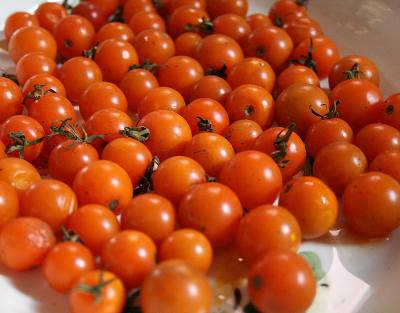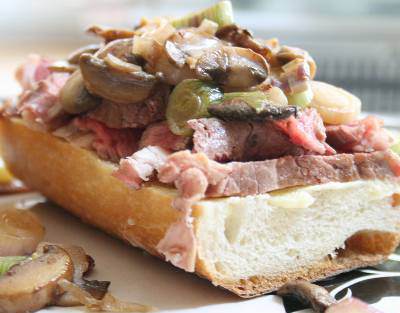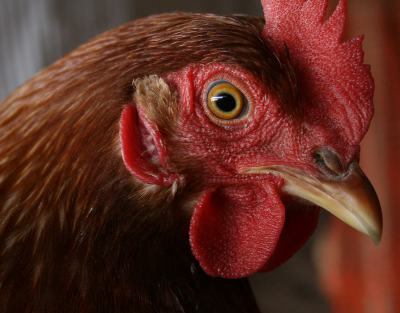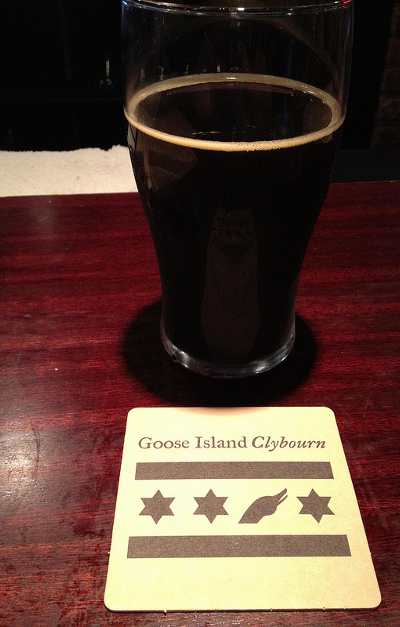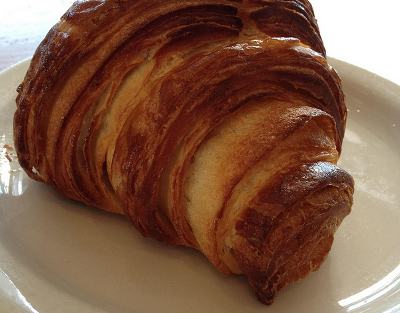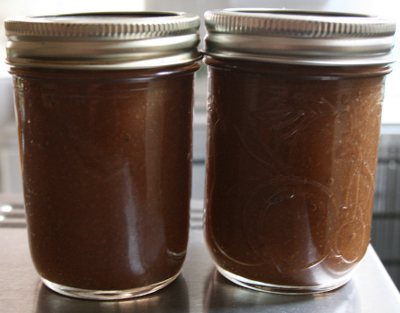I had a chance, on Monday, to try the Goose Island Clybourn Resolutions Stout on cask. As the beer was the subject of my last post, I thought I’d share my impressions with you. We’ll talk about something other than beer in my next post. I promise.
First though, if you’re curious about what “cask” beer means, Wikipedia has a nice article on it. So does All About Beer magazine. Both indicate there’s a possibility that a place advertising “cask-conditioned” beer is misrepresenting themselves. I don’t have the expertise to know for sure by looking at a beer, but I have no reason to doubt GIC or the brewers there.
For this post the most relevant information about cask beers is the fact that cask-conditioned are served warmer than draft beers and with substantially less carbonation.
I find these beers incredibly fascinating. It took me awhile to warm up to them1. Generally, I like my beers cold (or at least fairly cool) and quite heavily carbonated. I recognize this is totally personal preference, but it’s part of what leads me to typically order draft beers over cask beers. If a beer is offered on both, I’ll usually try both, and almost always order the draft.
Had I had that option with Resolutions on Friday, I would have been torn. I wouldn’t have felt like I could order two beers (not at 10% ABV), but the cask presentation blows the (quite-good) draft presentation out of the water.
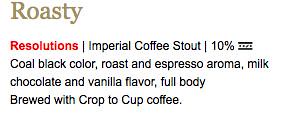
However, the cask pour was nothing like the draft. First of all, as expected, it was substantially warmer than the draft. Indeed, I would hesitate to call it much cooler than room temperature (though I know cask beers are supposed to be cooler than room temperature). Second, the head on it was quite a bit more substantial than the draft version.
I mentioned previously that the draft aromas were all about the roast. Here? This is where I got the promised scents of vanilla and chocolate. There’s some coffee notes as well, but nothing that promises the bitterness I associate with coffee. I suspect the missing “roast” scent is what typically promises a hint of bitterness, but I’m not sure.
In terms of flavor, this beer was good milk chocolate in a snifter, with a coffee chaser. That coffee taste lingers in the back of your throat while you consider having more. There’s a slight bitterness mid-tongue that’s all that’s left of the roasty flavors from my last tasting.
This was definitely a smoother beer. Easier to drink, with a much thicker mouthfeel. I suspect this was the decided smaller carbonation bubbles that come with the natural carbonation. Either way, it felt good on my tongue and, perhaps unfortunately, masked any of the tingling sensation I’d expect with a 10% ABV beer.
All of this added up to a much more enjoyable beer, which I hadn’t expected, given I liked the draft so much as well. But I finished this snifter, and I wasn’t able to the draft, so that says something, I suppose.
This beer certainly left me pondering the effects of both forced carbon dioxide carbonation on a beer, versus natural, lessor carbonation and temperature control. I’ve heard many people argue that cold tamps down on flavors, which is part of why (these people say) the big American beers always recommend serving ice cold. However, I find many beers more palatable at warm temperatures, and Jarrod Reuben (former GIC brewmaster) did once say that “everything” is more palatable at warmer temperatures.
I see myself exploring cask-conditioned beers some more. This one’s left quite an impression on me, but so have the two or three India Pale Ales (IPAs) I’ve enjoyed on cask. Normally, this is a style I find truly vile, but cask-conditioning and even, in once case, simply warmer temperatures, have made a few quite nice.
Tell me, do you guys have much, if any, experience with cask-conditioned beers? If so, what are your thoughts? Someone who reads this has to be more experienced with them than I am, and have some thoughts on them.
fn1. HA! “Warm up” to cask beers! I totally laugh at my own punniness here.


